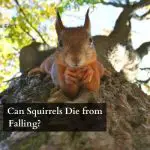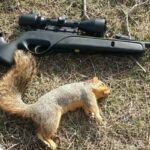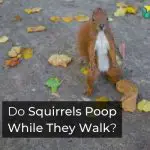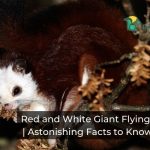Facts About Black and Red Bush Squirrels | A to Z Information
The Black and Red Bush Squirrel (Sciuridae) is a rodent species belonging to the Sciuridae group. Afrotropic is where they are located. They’re nocturnal. Individuals can reach a length of 243.07 mm.
The species is found in Malawi, Tanzania, and Zambia that belongs to the Sciuridae family. It is also found in the Misuku Hills and Nyika Plateau in Malawi, as well as the Poroto Mountains and Mount Rungwe in Tanzania.
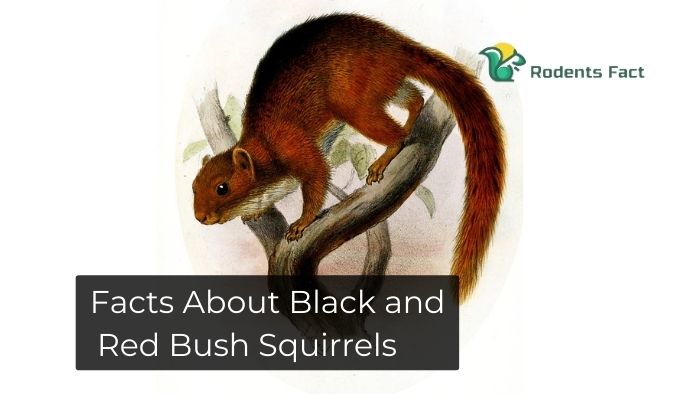
The black and red bush squirrel has not been discovered in Zambia, where it was thought to be present in the Mafinga Hills and Makutu Mountains.
Subtropical or tropical wet mountain rainforest, subtropical or tropical dried semiarid, and subtropical or tropical dry lowlands grasslands are their native environments. Loss of habitat might put it in jeopardy.
Scientific Classification
| Common Name | Black and Red Bush Squirrel |
| Kingdom | Animalia |
| Phylum | Chordata |
| Class | Mammalia |
| Order | Rodentia |
| Family | Sciuridae |
| Genus | Paraxerus |
| Species | Paraxerus lucifer |
Black and Red Bush Squirrel Facts
The distinction is mostly due to a mutation in the gene (a particular arrangement of nitrogen bases in the DNA of chromosomes) that affects melanin pigmentation formation (in the hair and skin).
A portion of DNA linked to these genes has been “lost” in the black squirrel. Melanin genes are found in pairs, as are most genes. If one of the squirrel’s genes is disrupted, the animal will have brown-black fur. If it has 2 versions of the defective genes, on the other hand, it will have a shiny, jet-black coat.
🐿️ See More: How Rare Are Black Squirrels? | Know Where They Found
Habitat
The black and red bush squirrels can be found in regions with suitable nesting sites. Savannah, mopane, and acacia woods are notable examples.

Though they prefer to reside in trees, these squirrels will sometimes build nests in deep holes, under rocks, and on building roofs.
Reproduction
The female initiates breeding in black and red bush squirrels, and it takes place exclusively in the early morning. A rattling call will be made by the female. The male will respond by emitting a low-pitched nasal murmur and chasing the female.
Both male and female will flap their tails and create clicking sounds throughout this pursuit. Throughout copulation, the male will groom the female completely; following copulation, both genders will groom themselves automatically.
The Behavior
The black and red bush squirrels dwell in small groups with one or two adults and a large number of youngsters. Two to twelve individuals make comprise a family group.
These swarms congregate in trees, underground holes, rooftops, and crevices between rocks. Although the black and red bush squirrel invests most of its time in trees, it may occasionally scour the ground for fallen edibles like berries.
During eating and activities including cleaning, hunting, and fighting, the social structure within these groups may be noticed. They are also possessive, marking regions ranging in size from 0.3 to 1.26 hectares by mouth wiping, peeing, and anal scraping.
Just during the breeding season, when other squirrels are permitted to approach, are these areas not protected.
Communication and Perception
Tapping and crunching voice inflections are used by black and red bush squirrels to communicate. They will grunt and snarl if they are disturbed. Three “chirp” or “click” noises make up its low-intensity alarm cry.
This is employed as a territorial defense or a warning. They also produce a high-pitched warning sound, akin to a bird call or whistle, that consists of six or seven high-pitched notes. When frightened, black and red bush squirrels may bob their heads and flick their tails.
Predation
Reptiles, hawks, and predatory animals are among the black and red bush squirrels’ threats.
What Do Black and Red Bush Squirrels Eat?
Herbs, grains, fruits, petals, and various arthropods are primarily consumed by black and red bush squirrels. Although opportunistic, they favor acacia seeds and gums, as well as aloe seeds and blossoms.

Termites will be consumed as well. Bugs, extract leaves, and bird eggs are also eaten by squirrels in East Africa.
A balanced meal comprising protein, lipid, and essential nutrients, including enough calcium, is required for black and red bush squirrels. Feed-in the amounts recommended a range of meals from each group.
FAQs
Where do black and red bush squirrels live?
The member of the rodent is found in African regions. Their main habitats are in Zambia, Malawi, and Tanzania.
Do red squirrels cause damage?
Red squirrels get food from spruce trees and other evergreen trees. For getting their food, they would harm the trees. Actually, red squirrels are known for damaging trees.
Final Words
The black and red bush squirrels are one of the nicest, fuzzy, and most good-looking species of squirrels. Though they love to love on trees, sometimes fond of nesting on the ground by digging deep holes.
By the way, the black and red bush squirrels are native to the Afrotropic regions. It’s the perfect time to take a stroll in a nearby park, or maybe even just outside your home, and laugh at squirrels’ actions.

